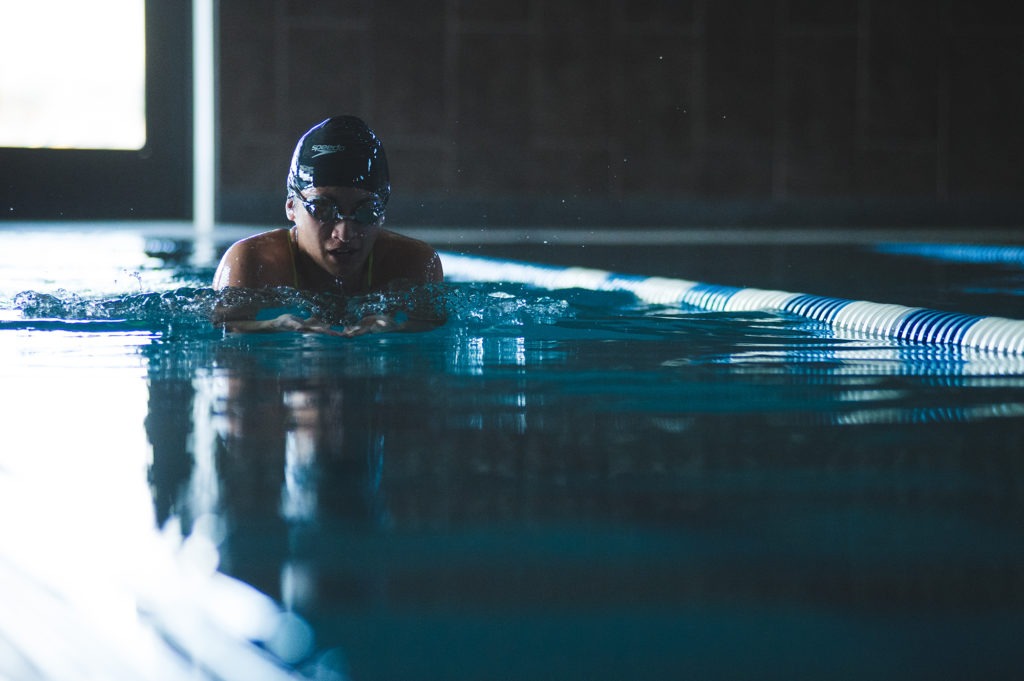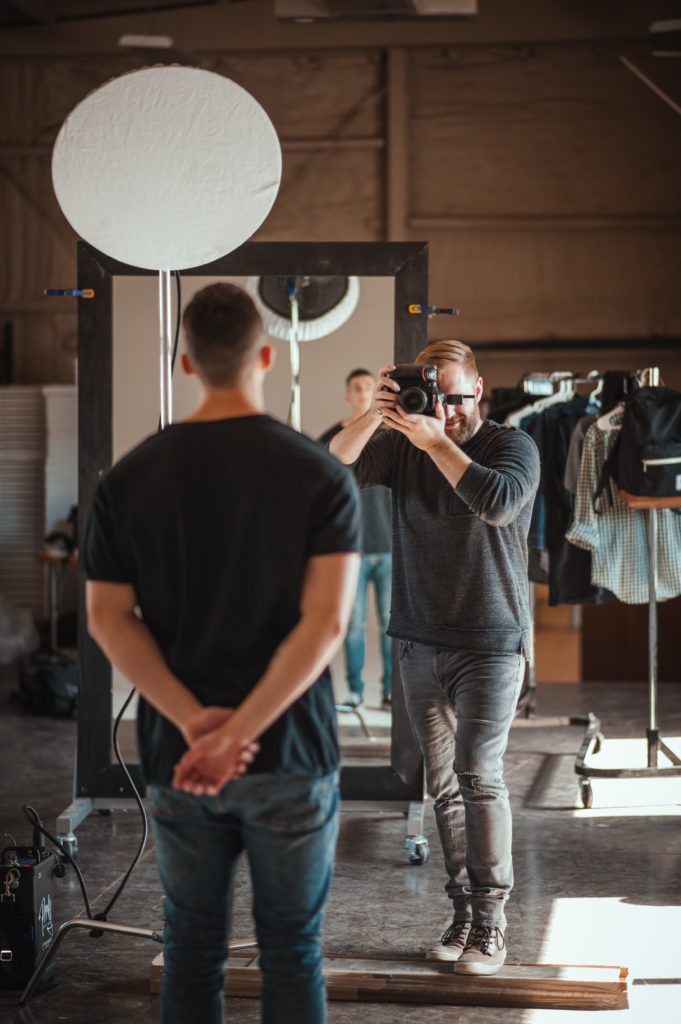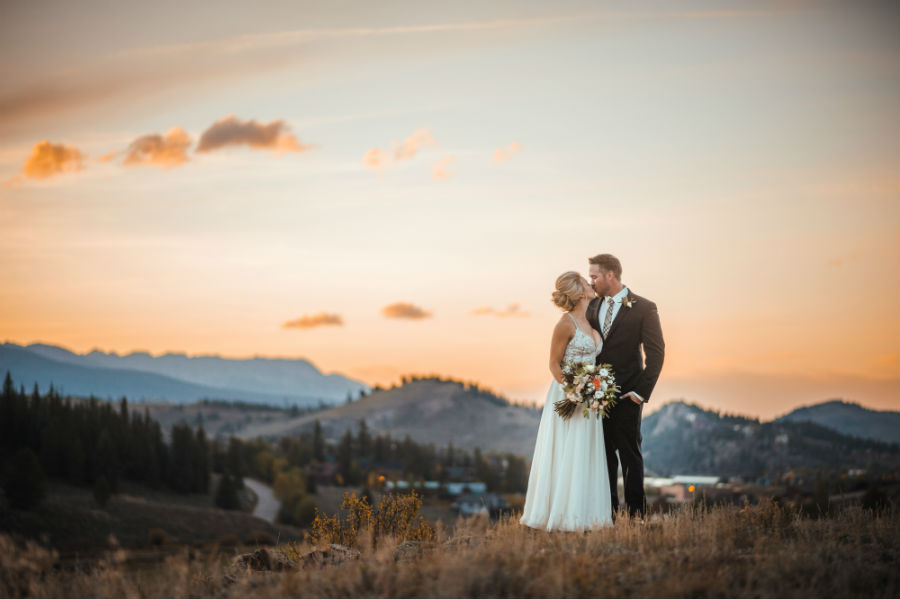Reading Time: 6 minutes
A picture’s worth a thousand words, the saying goes. Many argue that a static image can convey complex information more easily and in less time than text alone. According to research by 3M, visuals are processed 60,000 times faster than text, which means you can paint a picture for your audience much faster with an actual picture (FastCompany).
Most businesses recognize that they need images to convey their story, from their website to brochures to ads. The challenge can be hiring a photographer to deliver on budget and who can emulate your brand’s style. To uncover best practices, Signal talked with three professional photographers based in Colorado.
 |
Tim O’Hara Photography’s tagline is people, places, products. Tim specializes in architectural photography, such as hotels and resorts, serving clients nationally. |
 |
Patrick Edmiston, the owner of PHOCO, is focused mainly on events such as weddings, music festivals, and corporate conferences. PHOCO also does food and product photography. |
 |
Josh Barrett, the owner of Ignite, provides high-end commercial and lifestyle photography for large brands to small businesses. He mostly photographs people, through both portraits and lifestyle scenes on location and in studio. |
1. choosing a professional
Tim
There’s a lot of lead services [like] Thumbtack and Bark that people are going out and getting quality photographers through. With these services, the client gets five bids. [For these services, you enter the details of your project and get custom quotes.]
Josh
The hard part is separating those who make it a profession and deliver consistently good content, and those who just dabble in photography. If you see a project or campaign completed by an agency or company, and you like the work, don’t be afraid to ask who did the photography. Of course, Instagram is always a good place to do some research as well. Just be sure to do a little extra digging to make sure a photographer found on social media can handle the project you might have.

2. evaluation
Patrick
What I recommend to everyone is dig in a little bit deeper than an online portfolio because those are going to be selected images that perhaps [the photographer] spent extra time on. If you shoot a million images you’re going to have some gems, so I recommend looking at a full shoot. Every photographer should be able to give you their gallery for an entire shoot.
Josh
I recommend having a quick phone conversation. Describe your project and ask how they might approach it. Just make sure it feels like they are confident they can complete the job. A good photographer will have a similar style and vibe throughout their portfolio. Look for lighting, posing, styling, and processing that you connect with. Try putting an image from that photographer in the comp [a composite art layout] you are working on and see if it feels right.
Tim
You can have the best photographer in the world but if he has an ego and you don’t like him you’re not going to get what you want. Don’t hire them without meeting them. Especially if you are doing a studio shoot and plan to spend four to six hours together.
You have clients who just send you out and don’t give you any direction. That’s complimentary but you could miss something. My suggestion is to try to be there, especially if you’re shooting products in a studio. Communication is sexy, that’s what my wife says. As much input you can give your photographer the better.

3. stock and in-house snapshots
Tim
Just because you have a cell phone doesn’t mean you have an eye. I think people who appreciate their product or their service and how they want to be perceived, those people get original photography. With architectural, hotels, resorts, etc., you can’t use stock because you have to shoot what you are selling.
Josh
I do feel like there is a place for stock, and in-house shooting. Tight budgets, short deadlines, or maybe a project where you only need one small image that is not the focus of the project you are working on, [then stock may] make sense.
Patrick
I think it almost never makes sense to use stock. I think it’s worthwhile to pay to get unique original images, [because] people really can tell the difference and if they’re looking at [an attractive photo] and then they come in [to your business] and it’s not representative then you’ve let down those people.
[There’s an adage] of how you do one thing is how you do everything and to me that means that the About Us page with team headshots should match the level of work that you do for [your core business.] Whether you’re an auto mechanic, a cupcake bakery, or a healthcare company, it should represent your brand, and throwing up a cell phone photo is probably not the image [you want to] portray.

4. copyright and ownership
Tim
The client has to ask the hard questions. What are my rights with the images? There’s usage rights pricing. There’s unlimited rights pricing. My philosophy is unlimited use, one price. The client owns them 100 percent. That’s not very popular [among photographers]. But I didn’t stay in business 36 years by telling clients “guess what, you owe me more money.”
Patrick
As artists who created [the images], we own the rights to publish [them] in our portfolio. And then we give our clients full usage rights which means they can do everything except for sell the image. We don’t sell our images as stock, although we retain the rights to do so. [Stock] lessens the uniqueness of what they’re paying for so we would negotiate that with client upfront.
Josh
The majority of photographers I know will … charge for usage of the images captured but will retain the copyright to the images. I often provide exclusive unlimited usage so I don’t need to keep track of where and when the shots are being used. ‘Exclusive’ means the client is the only entity that can use the images.

5. insurance
Tim
Every photographer needs at least one million dollars in liability. A scenario could be a photo shoot at a bank and one of my lights falls down on an employee or does some damage. Not only could I get sued but the client could get sued. Whenever I do a shoot the client needs to say we need a document saying we’re co-insured [for that shoot].

6. talent releases
Patrick
Whenever you use the likeness of a human as a recognizable face you should have their release. Most companies that we work with will provide their own [releases]. For an event, it’s good to provide an assistant to go around to get names. We really recommend having a waiver included in the sign-up for the event. [As an attendee, by signing it, you agree to your image to be used.]

7. cost
Josh
You are going to find a huge range of prices. This is mainly because you have the amateurs that dabble in photography, all the way to top tier world class photographers. [I] recommend asking about rates in your first few conversations.
Tim
For me, it’s $2,500 a day…for unlimited use. My architectural pricing is per unit. [A popular model is cost sharing between parties, like a contractor and architect. There is typically increase in price with this, such as 30 percent, shared Tim]
Patrick
For ninety percent of our clients, we do an hourly rate … so people know what they are paying upfront so they don’t get hit with any surprise charges. I think a general rule is 10 to 50 dollars per image. The more images you’re getting the lower that price [will be]. [It’s] not going to be that much more than stock. [Patrick suggests clarifying the scope upfront to avoid price creep, articulating needs like models, number of photos, and the type of exposure the photos will get.]

8. receipt of images
Tim
I give the client everything, and then they come back with their favorites and I treat them.
Patrick
All our photos are touched up to a level that they can be used anywhere so we cull down the total number and give them an appropriate number. If we’re working with a band to get an image for the front of their CD cover, often we will show them every photo. Sometimes I show them while we’re shooting and make selections as we go [as they] know specifically what they’re looking for. We might shoot two hundred images just to get the perfect one. An architecture firm will want more post-processing than a real estate company even though it’s effectively the same original image. In real estate, they’re looking for quick and cheap and in architecture, they’re looking for something that really portrays the quality of their work.
Josh
Projects and clients vary in what they want, but I usually provide an edited final selection of images that are ready for immediate use. I want control over how the processing is conducted so I rarely give raw files. I also know clients don’t have time to weed through a huge pile of un-edited shots. I feel like this is the responsibility of the photographer.
UCHealth Neurology | Josh Barrett / Ignite
–
There are many aspects to consider when hiring a photographer. Remember, in many cases, a moment can’t be reproduced. Before you hire a professional, consider these eight tips to make sure you capture those import occasions.
Hiring a photographer is an important business decision. Carefully select a professional that will honor your brand standards (it’s your job to communicate these). The right images will help you strengthen your brand identity, and authentically evoke emotional needs in the consumer that can only be satisfied by your products and services.
You might also like my previous post – Pollination: Nature’s guide to marketing


Hello ,
I saw your tweets and thought I will check your website. Have to say it looks very good!
I’m also interested in this topic and have recently started my journey as young entrepreneur.
I’m also looking for the ways on how to promote my website. I have tried AdSense and Facebok Ads, however it is getting very expensive. Was thinking about starting using analytics. Do you recommend it?
Can you recommend something what works best for you?
I also want to improve SEO of my website. Would appreciate, if you can have a quick look at my website and give me an advice what I should improve: http://janzac.com/
(Recently I have added a new page about FutureNet and the way how users can make money on this social networking portal.)
I have subscribed to your newsletter. 🙂
Hope to hear from you soon.
P.S.
Maybe I will add link to your website on my website and you will add link to my website on your website? It will improve SEO of our websites, right? What do you think?
Regards
Jan Zac
Hi Jan
Thanks for reaching out. I’d be happy to discuss your needs. I suggest completing this brief intake form so we can have a productive call.
Best
Dave